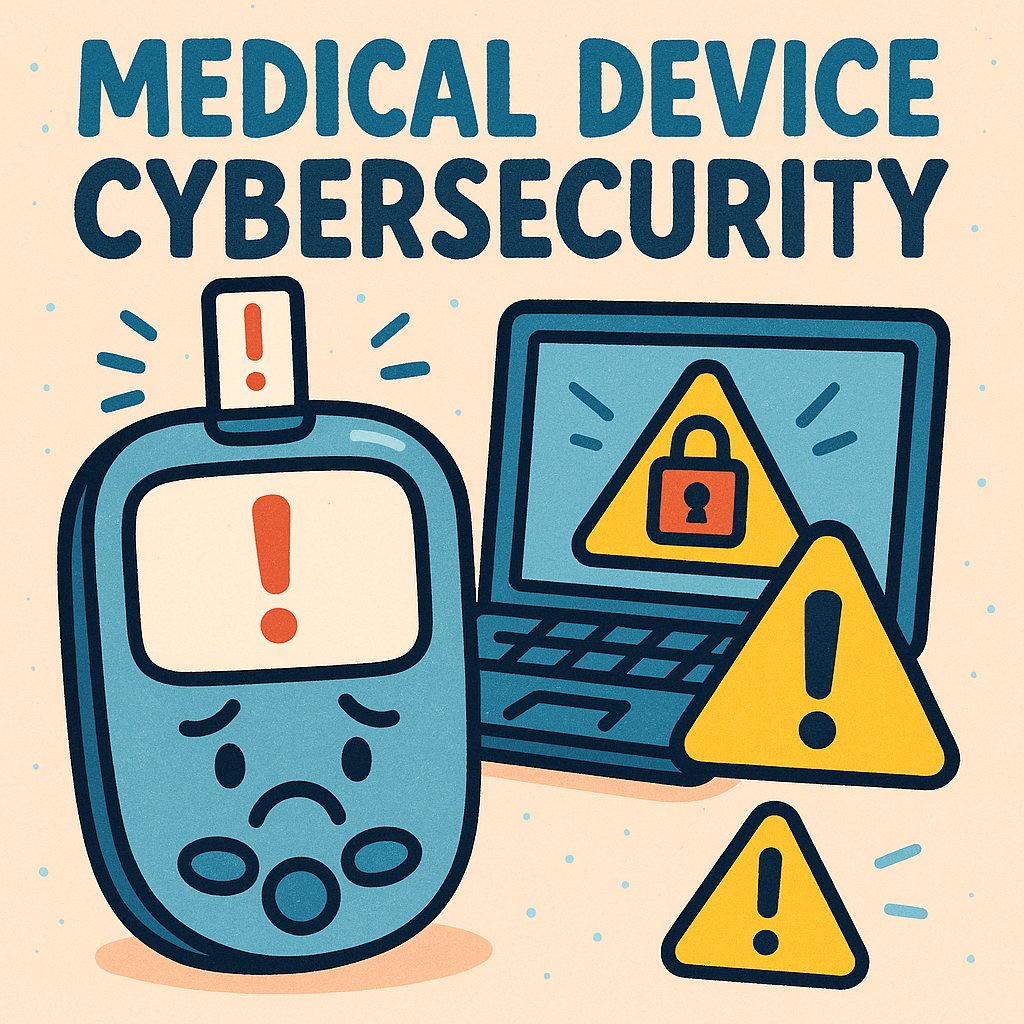Understanding Firmware Vulnerabilities in Blood Glucose Meters
Blood glucose meters (BGMs) are critical devices for individuals with diabetes, allowing them to monitor their blood sugar levels and manage their condition effectively. However, the firmware that powers these devices can harbor vulnerabilities that not only jeopardize patient safety but also raise significant concerns for regulatory bodies like the FDA.
The Hardware and Firmware Landscape
BGMs typically consist of a microcontroller, sensors, and a user interface. The firmware is the low-level software that controls the hardware, collecting sensor data, processing it, and displaying results to the user. Most BGMs incorporate sophisticated algorithms for calibrating readings, ensuring accuracy, and providing predictive analytics based on historical data.
However, the integration of these complex systems can introduce several vulnerabilities. For instance, if the firmware is not adequately secured, hackers can exploit weaknesses, potentially altering the device’s functionality or accessing sensitive patient data. In recent years, the FDA has noted an uptick in reported vulnerabilities that have led to recalls, raising alarms about the cybersecurity posture of medical devices.
Analyzing FDA Recall Trends
The FDA tracks recalls based on various factors, including device performance, safety concerns, and cybersecurity risks. A significant trend has emerged: a growing number of recalls are directly linked to firmware vulnerabilities. In one notable instance, a popular BGM was recalled after researchers demonstrated that it could be hacked to display false readings, putting users at risk of inappropriate insulin administration.
This correlation between firmware vulnerabilities and recalls underscores a critical area of concern for manufacturers and regulators alike. The challenge lies not only in identifying vulnerabilities but also in understanding their implications for patient safety and device reliability.
Real-World Design Tradeoffs
Designing a secure BGM involves navigating a complex landscape of tradeoffs. For example, manufacturers must balance usability with security. A device that requires frequent updates or complex authentication may deter users, especially those who are less tech-savvy. Additionally, the pressure to bring products to market quickly can lead to rushed firmware development, potentially overlooking security best practices.
Moreover, the resource constraints faced by manufacturers can further complicate the situation. Smaller companies, in particular, may lack the resources to invest in comprehensive cybersecurity measures, leaving their products vulnerable. This raises an ethical dilemma: how can companies prioritize security without sacrificing accessibility?
Challenges and Solutions in Firmware Security
One of the significant challenges in securing firmware is the need for ongoing updates. Unlike traditional software, firmware updates for medical devices often require rigorous testing and regulatory approval, which can delay deployment. This can create a situation where known vulnerabilities remain unaddressed for extended periods, increasing the risk of exploitation.
To combat this, manufacturers are exploring over-the-air (OTA) updates, allowing for more agile responses to emerging threats. However, implementing OTA updates introduces its own challenges. Security measures must be in place to ensure that updates are legitimate and not an avenue for attackers to compromise the device.
Why Design Decisions Matter
Every design decision has far-reaching consequences. For instance, the choice of microcontroller architecture can significantly impact the device’s ability to withstand attacks. Some architectures may offer better built-in security features, while others may be more susceptible to exploitation due to their widespread use. Similarly, the algorithms employed for data processing must prioritize both accuracy and security, as any flaw could be manipulated to produce erroneous results.
Additionally, user interface design plays a vital role. If users cannot easily understand warnings or updates related to their device’s security, they may inadvertently expose themselves to risks. Therefore, engaging in user-centered design practices is crucial to ensure that security measures do not compromise usability.
The Future of BGMs and Cybersecurity Advisories
Looking forward, the relationship between firmware vulnerabilities and regulatory advisories will likely intensify. As the FDA continues to refine its guidelines for cybersecurity in medical devices, manufacturers must adapt their processes to align with these expectations. This may include implementing more rigorous testing protocols, investing in cybersecurity training for engineers, and adopting a culture of security-first design.
In conclusion, navigating the complexities of firmware vulnerabilities in blood glucose meters requires a holistic approach that considers hardware, software, and user experience. By prioritizing security and understanding the implications of design choices, manufacturers can contribute to safer, more reliable medical devices that empower patients in managing their health.



